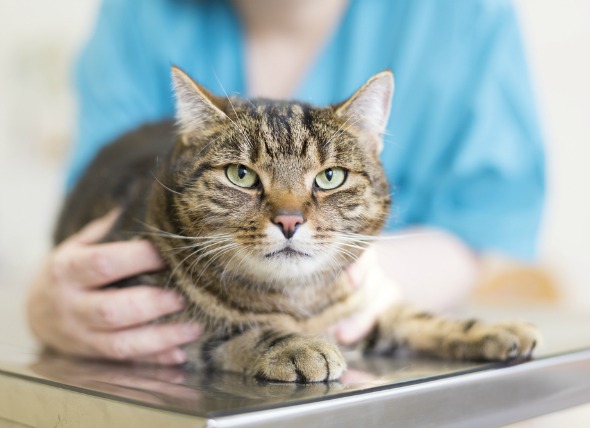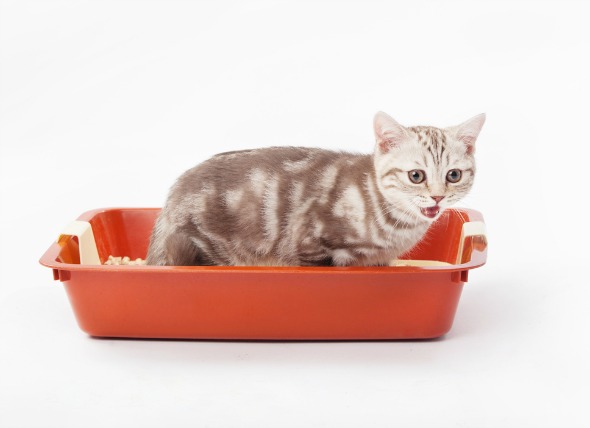
It is common knowledge that cats and dogs don’t exactly see eye to eye. So what happens when you bring home a cat to your dog? Is that a recipe for catastrophe? Or are you up to the challenge of mediating the negotiations between your fur balls?
First off, for this to work your doggie has to be socialised with cats and not give you any issues. Training your pooch to be cat-friendly is a whole different ballgame still.

Secondly, you want to check your new kitty’s background. Ask the breeder, shelter or family you’re adopting them from for as much information about their past as possible, so you know what to expect. Bringing home a cat who is terrified of dogs isn’t going to go over well. Preferably, you’ll adopt one who is already familiar with dogs in general, but at the very least make sure the cat has absolutely no reason to hate them. The ideal candidate is a kitten who was socialised from 4 weeks onwards with dogs. Research has shown that these kittens are not defensive to strange dogs at 12 weeks, when the fear response to strangers and foreign objects has come into play.
That said, with a few precautions and a lot of patience, there is no reason why even an adult cat who wasn’t socialised with a dog but also not traumatised by one cannot peacefully coexist with yours.
After you have decided on a kitty, make sure you make their transition to your home as comfortable as possible. Cats are territorial in nature and taking them out of their familiar turf without them knowing where they’ll go or what will happen is incredibly stressful.
Set up their safe room to gain their bearings away from any loud startling noises - such as the washer or dryer - with all the basics: food bowl, properly spaced from the water bowl to avoid contamination; litter tray on the other side of the room and perhaps some bonus perks like a scratching pad or post next to the door to mark as their own and a spritz of Feliway in each corner to welcome them to your new home. If it is a rather empty room, add some carton boxes or furniture for them to hide under - they’ll need it.
When the big day finally arrives, see if you can ask the current owners for something like a blanket with the cat’s smell in it to put in the pet carrier - it helps to have something familiar to hold on to, and if you have a Feliway spray, use it on the carrier. In the same vein, it would help your kitty immensely if you brought home some familiar litter and food as well.
Once you’re home, do not let the dog near the cage - go straight to the safe room. Put the carrier down and open it, then leave. It’s not easy to do this, but this cat needs about an hour at the very least to scout their new surroundings and gain their bearings. If it is a kitten, they will need less time - as little as 15 minutes. After a suitable time has passed, you can go in and check up on them. See if they’ve eaten or used the litter tray - both need to happen within 2 days and both are indicators that your new kitty is comfortable enough to let their guard down for just a bit.
Go in and check what stage of adjustment they are at. They may still be in their pet carrier, or hiding away under a bed, or they might be checking things out and actually be looking at you with interest. Some of the braver ones will come up to you, greeting you with a tail-up. And that is what you’re looking for - however long it takes.
Do not go to the next step until you get that tail up and until they are eating. Respect their pace, so they are fully comfortable and ready for when they get to meet your dog.
Tip: consider this time that they are spending in the safe room a quarantine period, to make sure that they aren’t bringing something into the house that might infect your other pets.
All right, so your cat is feeling comfortable in their new room and your dog is on to the fact that he isn’t alone in the house. It’s time for the scent swap. Get two small towels and rub one all over the dog and one all over the cat. Then put the towel under the food bowl of the other. This way, they’ll start to associate each other with food - yes, we’re bribing them. Good associations can only help. And the scent of an animal holds a lot of information that gets transferred via pheromones, allowing them to indirectly get to know each other.

Your cat might also hiss at you when you come in smelling like dog. If this is the case, make sure you wash your hands before you go in and perhaps put on a bathrobe over your clothes. There is no need for them to get upset and associate you with something they do not like or are afraid of - for now.
Once you find that your cat eats and purrs and is generally happy while eating the food of the towel with your dog’s scent, you’re good to go to the next step.
Time for your kitty to get to know the rest of the house in peace. Have someone go for a walk with the dog so you can let them do so in peace. After the dog has left, feel free to open the door to the sanctuary and leave it open. Your cat will likely retreat to it a few times during their excursion when they feel overwhelmed. You’ll see them skulking about at first and sniffing around, but once they’re walking around confidently with their tail in the air, you’re golden. Just make sure to return them to their room before the dog gets back.
And when the dog gets home, they’ll want to check out who has been nosing around, so expect them to do some ferocious sniffing!
We’re almost there now. The actual introduction is near. Grab a couple of food bowls and some treats and place them on each side of the safe room door. The idea is that they can hear and smell each other without there being an option for escalation. And to bribe them into liking the other animal’s presence.
Have someone keep the dog calm and quiet while focused on the treats. If there is any over-excited behaviour, stop what you’re doing and try again later. Do not let them escalate in their enthusiasm. Dogs tend to be a lot more forward in getting to know someone than cats. Even when being introduced to other cats, cats need their time. And we’re trying to make sure nobody feels rushed here. Try and keep the cat focused on the treats as well, but if they cannot stop focusing on the door and it escalates in growling and hissing - it is time for a break as well.
Once your cat is purring and comfortable with the dog being on the other side of the door and your dog is calm and able to just hang out near that door, you’re ready for the real introduction.
 Right, here we go! Leash the dog, back him away from the door a little and open it ever so slightly. Again, treats and food are encouraged to be used to keep the tension to a minimum. At the same time, if you see that the cat is actually curious and intrigued, let them sniff each other. Close the door after 30 seconds to avoid escalations and take a break. Repeat the procedure while slowly driving up the amount of time time that the door is open.
Right, here we go! Leash the dog, back him away from the door a little and open it ever so slightly. Again, treats and food are encouraged to be used to keep the tension to a minimum. At the same time, if you see that the cat is actually curious and intrigued, let them sniff each other. Close the door after 30 seconds to avoid escalations and take a break. Repeat the procedure while slowly driving up the amount of time time that the door is open.
Once they’re both comfortable with the door being open - the dog being calm instead of hyper and the cat greeting the dog with its tail up, we can open the door fully and see what happens. Once again, keep the dog on the leash and be ready to end the session at any time if escalation is an issue.
Now that the door is open, see if the cat wants to wander through the house. Keep the dog on its leash and try to keep him calm. Again, build this up time-wise and return the cat to their safe room if the tension rises. If the cat greets the dog with its tail up and the dog is calm and relaxed about their presence, you can take off the leash and let them interact that way. Keep supervising them until it is clear that both pets are relaxed around each other and return the cat to their safe room any time you aren’t around to supervise.
If at any time, things escalate with hissing, growling or hyper-enthusiastic jumping around or yelping and trembling with excitement, you’ve gone too fast and you need to back up a step. This process can take anywhere from a few days to a week to even a month, so be patient and let them run the show.
Once you’re convinced they won’t kill each other, and have negotiated terms as to who gets what when and what gets shared, enjoy your happy new family!
 Intestinal Parasite (Coccidia) in Cats
Coccidiosis in Cats
Coccidiosis is a parasitic ty
Intestinal Parasite (Coccidia) in Cats
Coccidiosis in Cats
Coccidiosis is a parasitic ty
 Umbilical Hernia in Cats
Umbilical Cat Hernia
Normal
0
false
Umbilical Hernia in Cats
Umbilical Cat Hernia
Normal
0
false
 Constipation in Cats
Constipation and Obstipation in Cats
Constipation
Constipation in Cats
Constipation and Obstipation in Cats
Constipation
 All You Need To Know About The Sphynx Cat
Do you remember the popular
All You Need To Know About The Sphynx Cat
Do you remember the popular
 Parasitic Blood Infection (Haemobartonellosis) in Cats
Hemotrophic Mycoplasmosis (Haemobartonellosis) in Cats
&
Parasitic Blood Infection (Haemobartonellosis) in Cats
Hemotrophic Mycoplasmosis (Haemobartonellosis) in Cats
&
Copyright © 2005-2016 Pet Information All Rights Reserved
Contact us: www162date@outlook.com